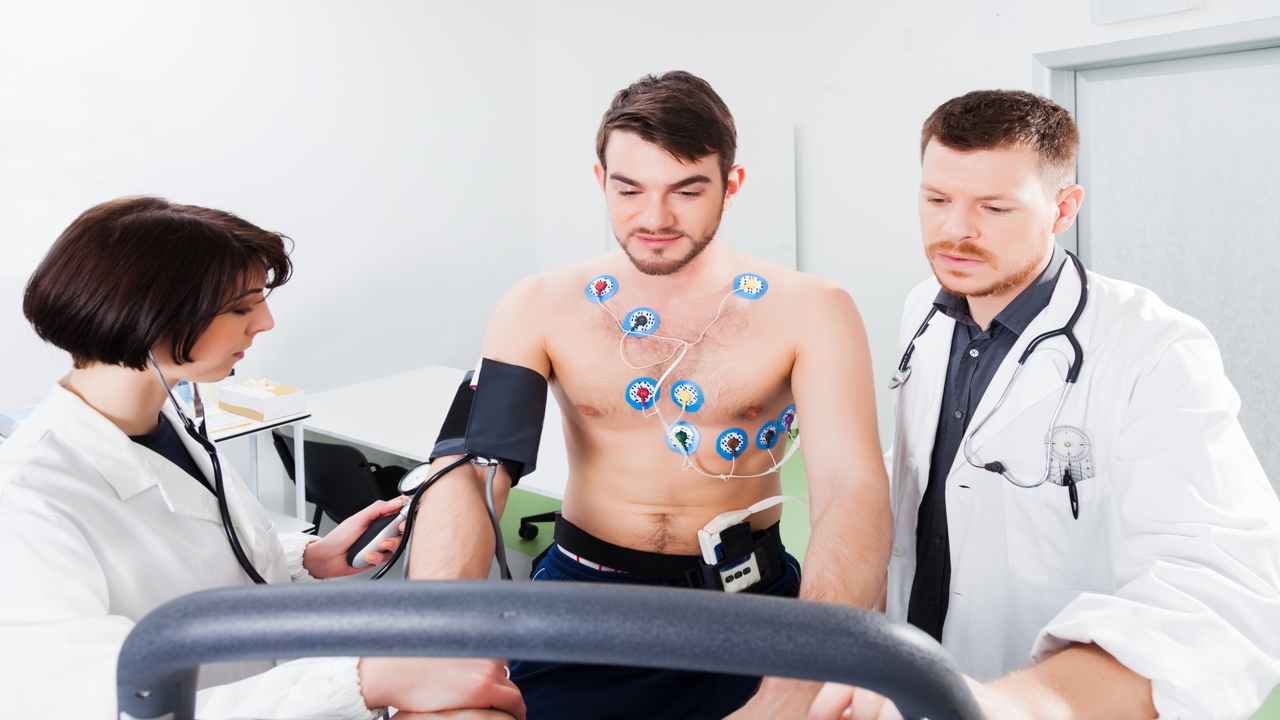
The cardiac stress test procedure, described in the following article, helps check the flow of blood through the arteries while performing an exercise. Read on to understand how this test helps determine a person’s overall physical fitness.
The cardiac stress test is a kind of medical test in which the arterial blood flow is reflected to the heart indirectly while performing a physical exercise. It means that the ability of the artery, in terms of blood flow to the left ventricular muscle of the heart during physical exercise, is evaluated. The blood flow during physical exercise is compared to that in the resting phase. Dr. Arthur Master from New York’s Mount Sinai Hospital standardized this test in 1929. Let us understand its procedure in the following paragraphs.
Procedure of Cardiac Stress Test
- The patient being tested for cardiac stress is connected to the electrocardiogram machine while he performs a physical exercise (for example, walking on a treadmill). This procedure helps in comparing the status of the heart in its resting phase to that in its exercising phase.
- A 12-lead ECG recording is made with the help of 10 standard connections. The intensity or level of exercise is increased in stages of three minutes, in terms of speed (mph, km/h) and grade (% incline). The blood pressure response and symptoms of the patient are checked repeatedly at each stage.
- Those patients who are not able to perform physical exercises, can be pharmacologically exercised. In the pharmacologically induced exercise, the heart rate and its pumping force are stimulated by means of drugs like adenosine, dipyridamole or dobutamine. The effect of these drugs is reviewed by cardiologists through periodic blood pressure and ECG tracing checks. During this simulated exercise, a radiotracer (thallium-201 or technetium-99m) is injected.
- The gamma camera is used to take pictures after a certain period of the completion of exercise. These pictures help in comparing the status of coronary arteries when in a resting position to that in the exercise mode.
In some of these tests, radioactive nuclides are used. Such tests are known as nuclear stress tests. The procedure of this test is capable of visualizing the relative amounts of radioisotope, that are present in cardiac muscles. It helps in the accurate detection of the areas in which blood flow has decreased.
Guidelines
The test should be ordered only if it is going to affect the future process of clinical management of the patient in question. When applying the test results to a patient, the likelihood or risk of coronary heart disease needs to be taken into account. One should understand that the test not only provides positive or negative results based on the images and exercise ECG, but also presents information regarding important prognostic and diagnostic variables.
Hence, keeping the aforementioned points in mind would help in conducting the stress tests in a safe manner.
Disclaimer: This HealthHearty article is solely for informative purpose and not intended to replace the advice of medical experts.


